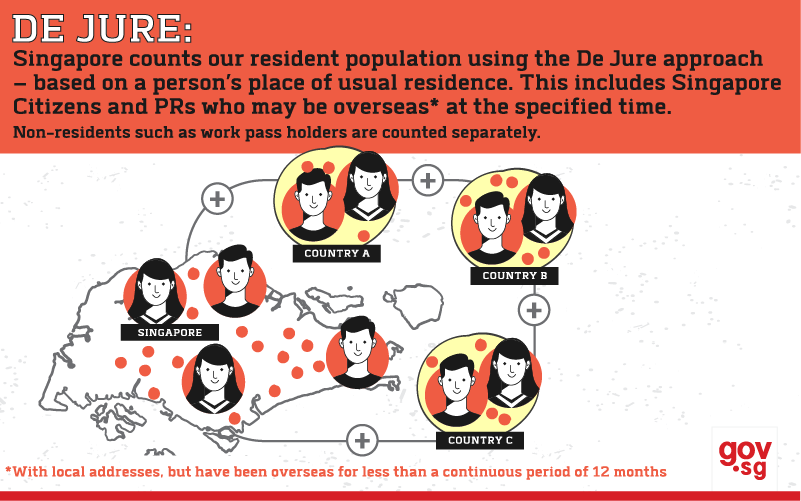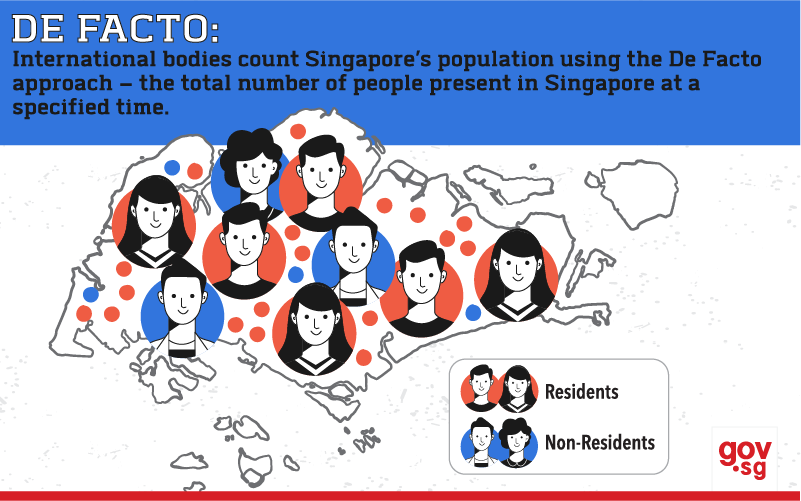.png?sfvrsn=7fb3bd48_0)
Some people have noticed that the official statistics on Singapore’s population are different from those released by international organisations like the United Nations (UN).
We are not the only country where there are such discrepancies. The official population statistics of many countries also differ from those reported by international organisations. These differences often occur because international organisations try to use a similar methodology for all countries for comparison, whereas individual countries provide statistics which take into account their local context and are more relevant for policy making. Since academic and public research often rely on population statistics from international organisations or use them to derive social and economic insights about a country, it is important to understand the reasons behind these differences.
This article attempts to explain the three main reasons why population statistics differ:
1) different population coverage,
2) different definitions of who is present in the country, and
3) different methodologies and assumptions used for population projections.
1) Different population coverage
Resident population
- Comprises Singapore Citizens and Permanent Residents. Everyone else is not included.
- The total dependency ratio, total fertility rate, resident population estimates and projections published by Singapore’s Department of Statistics (DOS) are based on this definition of resident population.
- Data on the non-resident population, such as work pass holders, are also provided, but as a separate non-resident category.
Total population
- Comprises both residents and non-residents such as work pass holders.
- The total dependency ratio and total fertility rate published by international organisations, such as Central Intelligence Agency (CIA) World Factbook, are based on total population.
- Population estimates and projections published by UN World Population Prospects are also based on total population.
Why the difference?
The resident population is the relevant statistic when measuring Singapore’s fertility rate or our dependency ratio for managing an ageing population. While foreigners on work passes do add to the workforce, the vast majority of foreigners who work in Singapore expect to return eventually to their home country. They do not build their families or grow old here. Appreciating this difference will help us to more accurately understand the impact of population ageing in Singapore.
2) Different definitions of who is present in the country
Place of usual residence (De jure)
- Since 1990 Singapore’s official population estimates have been based on the “de jure” definition.
- This definition is based on the place of usual residence of a person for the last 12 months, whether or not that person is present in the country at a specific point in time.
- This definition is also used by other countries like Japan, Australia and Hong Kong.

Present at a specific point in time (De facto)
- International organisations such as the UN and Organisation for Economic Cooperation and Development (OECD) use a “de facto” definition.
- This counts all persons who are physically present in the country at a specific point in time.

Why the difference?
The de jure concept is used by DOS, as it better reflects Singapore’s population in an era when many Singaporeans spend some time living or working abroad. Different countries may have different definitions of “usual residence” when applying the de jure concept. For example, the duration of “usual residence” might differ for different countries. This could lead to double counting. International organisations use the de facto concept for their population estimates for every country, as it is simpler and avoids double counting arising from different de jure definitions across countries.
3) Different methodologies and assumptions used for population projections
Why the difference?
Assumptions on migration, fertility and mortality trends are necessary to project future population size. Singapore may make different assumptions from international organisations like the UN on future migration, fertility and mortality. International organisations often prefer to use more generalised assumptions that help them make international comparisons, whereas Singapore will have more granular assumptions that are more meaningful to our context.
International organisations may apply the same generalised assumptions to the total population, while Singapore’s projections might use different assumptions, for example for our resident and non-resident population. These factors may therefore result in differences between the statistics released by the international organisations such as the UN, and Singapore.
Click this link to access Singapore’s official statistics on population.
We use cookies to tailor your browsing experience. By continuing to use Gov.sg, you accept our use of cookies. To decline cookies at any time, you may adjust your browser settings. Find out more about your cookie preferences here .

















